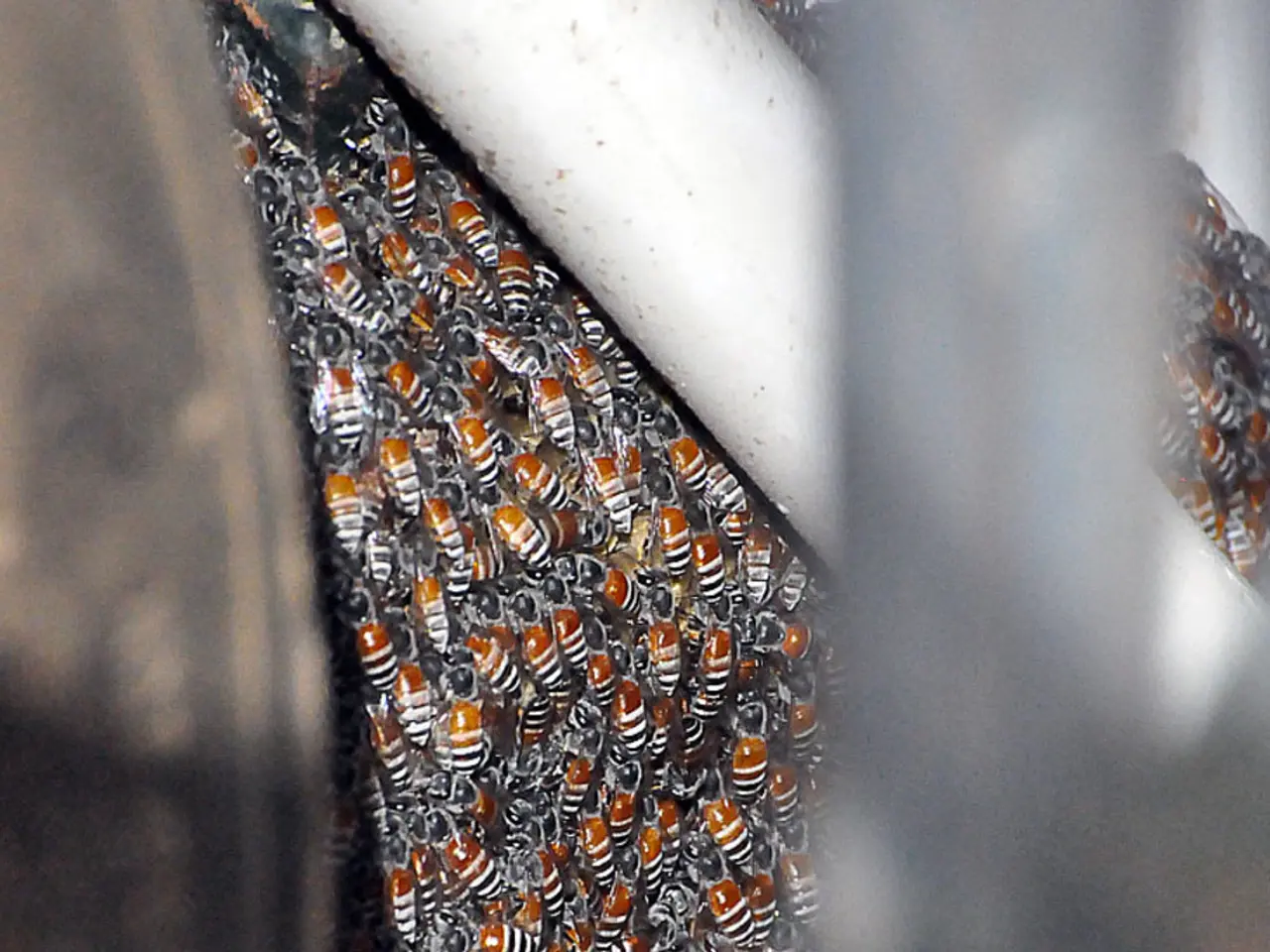Unveiling the Enigma: Ancient Goo in 2500-Year-Old Containers Decoded at Last
In a groundbreaking discovery, archaeologists have confirmed the existence of 2,500-year-old honey preserved in bronze jars from an underground shrine in the ancient city of Paestum, Italy. This finding offers direct molecular evidence of honey's use in ancient Mediterranean cultures for religious rituals and offerings.
The jars, dating back to around 530-510 BCE, were found in a shrine known as a heroon. In 1954, eight such bronze jars containing a sticky substance were initially discovered. However, it was only recently that a team of researchers, led by Luciana da Costa Carvalho, used advanced chemical and biomolecular analyses to confirm the substance as honey and honeycomb.
The evidence supports historical accounts and myths that highlight the spiritual and medicinal importance of honey. For instance, the ancient Greeks believed honey possessed healing properties and used it in medicinal remedies and beauty treatments. Honey was also seen as a divine food, capable of linking the mortal and the immortal.
The discovery provides several significant implications. Firstly, it confirms the use of honey in ritual offerings, underscoring its symbolic meaning tied to immortality and divine sustenance. Secondly, it offers insights into early apiculture (beekeeping) and consumption practices in the ancient Mediterranean, illustrating sophisticated resource exploitation.
Thirdly, the study demonstrates how residues in archaeological contexts can preserve molecular evidence of sacred materials, enabling deeper understanding of ancient religious practices. Lastly, it reinforces that honey’s significance went beyond nutrition—it was integrated into medicinal preparations, cosmetics, and religious ceremonies as a substance believed to nurture wisdom and health.
The preservation of the honey was aided by the presence of copper ions found in the jars. Copper ions are known for their biocidal properties, meaning they can kill bacteria and other microorganisms. This likely played a role in safeguarding the honey, allowing it to endure for thousands of years despite its organic nature.
The unique preservation method highlights how ancient peoples may have used materials with natural preservative properties in their offerings to ensure their longevity. The ancient Greeks and Romans valued honey not only as a sweetener but also for its medicinal, ritualistic, and symbolic purposes.
The honey found in the jars at Paestum was likely an offering to the deity Is of Helice, the mythical founder of the ancient Greek city of Sybaris. The discovery solves a mystery that had baffled experts for over 70 years. The use of honey in religious ceremonies further underscores its symbolic importance in ancient Mediterranean life.
The study confirming the identity of the Paestum honey was published in the Journal of the American Chemical Society in July 2025. This finding sheds new light on the cultural, religious, and economic importance of honey in ancient Mediterranean societies and opens new avenues for research into ancient rituals and subsistence strategies involving bee products.
- The findings suggest that ancient Mediterranean cultures integrated honey into their health-and-wellness practices, utilizing it for medicinal remedies and beauty treatments.
- The field of environmental-science might benefit from studying the preservation method of the Paestum honey, as it involves materials with natural preservative properties.
- This learning from the past might inspire therapies-and-treatments in modern medicine, considering honey's known healing properties.
- For those interested in education-and-self-development, the study on the Paestum honey offers valuable insights into the lifestyle and beliefs of ancient societies.
- The Paestum honey discovery not only contributes to food-and-drink history but also showcases cooking techniques that used honey as a sweetener in ancient times.
- As people seek personal-growth opportunities, they can delve into the symbolic meaning of honey in ancient religious rituals, such as its association with immortality and divine sustenance.
- Regarding career-development in archaeology, the Paestum honey study demonstrates the use of advanced technologies, like chemical and biomolecular analyses, to better understand the past.
- General-news outlets reported on the Paestum honey study, highlighting how discoveries like these can offer novel perspectives on history and enhance our understanding of the world.
- This breakthrough discovery also serves as an example for home-and-garden enthusiasts who may be interested in exploring natural preservative methods inspired by ancient practices.
- For those pursuing skills-training in areas like beekeeping or culinary arts, the story of the Paestum honey offers historical context and inspiration for modern practices.




